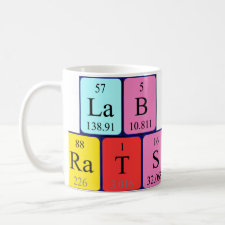
Authors: Tan L, Li YX, Pan XH, Marina ML, Jiang ZJ
Article Title: Boronate affinity glycosyl molecularly imprinted polymer microspheres for the determination of teicoplanin using ultra-high performance liquid chromatography coupled with tandem mass spectrometry.
Publication date: 2020
Journal: Journal of Chromatography A
Volume: 1615
Article Number: 460776.
DOI: 10.1016/j.chroma.2019.460776
Alternative URL: https://www.sciencedirect.com/science/article/pii/S0021967319312245
Abstract: Inspired by the fact that antibody recognizes antigen's epitope rather than its whole structure, we selected the glycosyl moiety of teicoplanin as the template, 4-vinylphenylboronic acid and methyl methacrylate as the functional monomers, and divinylbenzene as the cross-linker to synthesis molecularly imprinted polymer microspheres via precipitation co-polymerization. The glycosyl-imprinted microspheres can selectively capture the target glycopeptide antibiotic in aqueous solutions when the pH of surrounding environment is 9.0, and the captured antibiotic can be reversibly released when the pH falls below 4.0 again. This pH-controlled catch-and-release mechanism permits entrapping of glycopeptide antibiotics in slightly basic environments and keeping them entrapped under neutral conditions, and eluting in acidic media. Five teicoplanin components were selectively captured by using the prepared glycosyl-imprinted microspheres as solid-phase extraction adsorbents, and then detected using ultra-high performance liquid chromatography coupled with tandem mass spectrometry (UPLC-MS/MS). Finally, the method was thoroughly validated for accuracy and reproducibility by determining teicoplanin in food and biological samples, and achieving quantification limits of 0.1 μg/kg, 0.5 μg/L and 1.0 μg/L for milk, urine and plasma samples, respectively
Template and target information: teicoplanin, glycopeptide
Author keywords: Glycopeptide antibiotics, Teicoplanin, molecular imprinting, Solid-phase extraction, Monodisperse microspheres



Join the Society for Molecular Imprinting

New items RSS feed
Sign-up for e-mail updates:
Choose between receiving an occasional newsletter or more frequent e-mail alerts.
Click here to go to the sign-up page.
Is your name elemental or peptidic? Enter your name and find out by clicking either of the buttons below!
Other products you may like:
 MIPdatabase
MIPdatabase









